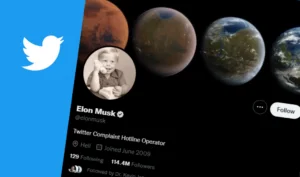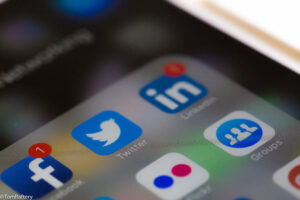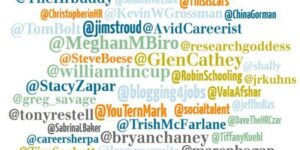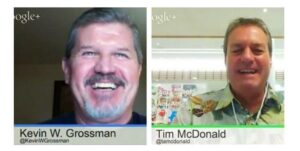
Leadership Done Right: Yes Elon, Empathy Works
Some conversations stay with me. It could be something about the subject, the wisdom of the person I’m talking to, or the timeliness of the

Some conversations stay with me. It could be something about the subject, the wisdom of the person I’m talking to, or the timeliness of the

If we’ve learned anything over the past decade, it is the power of a hashtag… #WorkTrends has been on quite an adventure. Over the past

Twitter is the third most popular social media site in the world and can play an important role in building your personal brand. By establishing
I’m consistently amazed by how unaware the average job seeker is of how to establish a positive first impression on a phone interview. I hear

In an age of digital exuberance, what can we do to avoid social overload? Tips to lower your stress while expanding your network

Looking back at the best of #TChat — with gratitude for everyone who brings the TalentCulture community to life

There are many paths in the world of work. But one thing is for sure — with community along for the ride, it’s never lonely!

What does it take to influence others on social media? An analysis of top recruiting influencers reveals some helpful answers

Can you believe #TChat has been going strong for three years? Time flies on the stream! Let’s talk about the future of social learning and your thoughts on community

TalentCulture is thrilled to be featured on Forbes List of “Best Websites For Your Career.” Why? In the spirit of lists everywhere, here are 3 reasons…

Twitter. For recruiters, it’s now a hot spot — not only for talent acquisition, but also for professional development. Who’s leading this social learning movement?
The Fact of the Matter Every community develops their own definition of what matters. For some communities, it’s motivated by a shared interest or a
Editor’s Note: Dave Ryan is one of the most dedicated #TChat members. Every week, as the tweets fly by and the twitter stream becomes ever
I got the invite to chill with someone. And that’s when it hit me: there’s just too much information, too many content curation tools, too
What’s your morning communications, social media routine like? Mine’s getting more complicated every day. Personally, just email requires checking at least three accounts on three
Written by Matt Charney, Originally posted on MonsterThinking.com Leadership is one of those soft skills, like “excellent communicator” or “team player,” which lies, almost exclusively,
Just for kicks, I keep a running list of “industry buzzwords” that make me laugh (or groan) because they are often misunderstood on the application level. “Influence,” especially as it relates to the world of #SocialMedia, has long since been on my list. “WHAT IS INFLUENCE?”
#TChat Radio Show Recap for 8/31/11 with the @12Most folks!
Written by Omowale Casselle Recently, I have been paying a lot of attention to different chats that happen on Twitter. Quite honestly, these community focused
As a digital native, I grew up with the web. And by that I don’t mean I just grew up with Internet access, though that’s
What does your Twitter feed say about you as a professional? Don’t let it be the “weak link” in your digital footprint. Here are 10 things you should AVOID in managing your Twitter presence…
What opportunities really lie ahead at the crossroads of workplace learning and social media? It’s a topic we live with every day at TalentCulture – as our ongoing #TChat “learning community” conversation continues…
Social recruiting isn’t really about technology – it’s about what you DO with the technology. Bottom line: It’s (still) all about relationships…
Chat technology isn’t new – but Twitter as a foundation for chats is only in its infancy. This channel seems made-to-order for dynamic, real-time knowledge sharing. Here’s how to get started…
Emotional intelligence. How does it factor into today’s world of work? Here’s what the TalentCulture community had to say in the very first #TChat Twitter chat session…